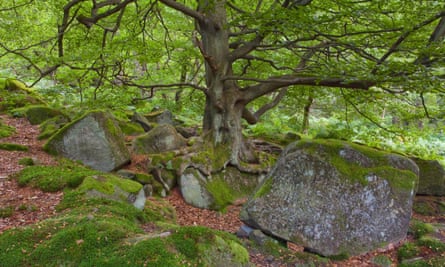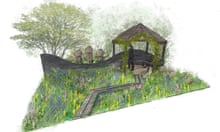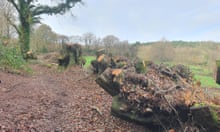There could be more than 2m ancient and veteran trees in England, many times more than previously recorded, researchers have found.
Campaigners are calling on the government to give ancient trees the same protections as wildlife and old buildings.
A study by the University of Nottingham has found there could be 1.7m to 2.1m ancient and veteran trees in England, of which only 115,000 are on record. Most of these are unlikely to be protected by any conservation methods, policy or legislation, so it is impossible to know how many are at risk.
Now, using work from the Woodland Trust, the researchers have estimated where these trees could be. To create a map, scientists used an ancient tree inventory created by the trust, and created a number of different mathematical models, called species distribution models, to predict where the trees may be.

Some of these models used predictors including distance from cities, distance from roads, and population density, as well as environmental factors, to identify places where ancient woodland exists but has not been identified.
Volunteers were sent to random places on the map and asked to sample for ancient woodland, and the models that most matched this random sampling were selected. Inaccessible places contained 100% more trees than previously found, meaning areas across England are likely to have a large number of ancient trees which have not been recorded, as they have not been searched.
Dr Victoria Nolan, one of the lead researchers on the study, said: “The findings from the surveys provide an insight into the number of species and type of trees that are present in different areas of the country. They also were able to be used to calibrate the models and provide estimates of the total number of ancient and veteran trees across England.

“Based on the best-performing distribution models, these estimates predict 2m ancient and veteran trees, which is an amazing increase on what is currently recorded. It also suggests there is a lot more recording to do, but by having these more accurate prediction maps, targeted surveying will make it much easier to find them.”
To be classed as ancient, a tree must be exceptionally old for its species. For example, an oak tree is ancient when it reaches 400 years of age, and is considered a veteran tree at 150. Birch trees, on the other hand, grow very quickly and reach ancient status at 150. Yews are not deemed ancient until they are about 800.
Features of an ancient tree include a hollowing trunk, other organisms such as fungi or plants in its structure, or dead wood in the canopy. The dead wood they contain is a very important source of habitat for wildlife. Many have irreplaceable historic or cultural value.
Despite their functions as carbon sinks and wildlife havens, there is no protection for ancient or veteran woodland unless it has been found to harbour other rare wildlife, or if it is subject to a tree protection order or is sited in a legally protected wildlife area. An estimated 20% of ancient and veteran trees are in such areas, so most have no legal protection.

The Woodland Trust is calling on the government to include such protections to cover all ancient trees in its new green paper on nature recovery in England.
Adam Cormack, head of campaigning at the Woodland Trust, said: “It’s remarkable that this research suggests we are yet to find most of the UK’s ancient trees, the cathedrals of the natural world. They’re out there somewhere – hidden in field corners, woods, hedges, even gardens and parks. Volunteers have done an amazing job to map thousands so far and this research is the inspiration to redouble our efforts.
“But it is also worrying because these trees don’t have the automatic legal protection that most of our wildlife and old buildings have. This is despite the fact some are more than 1,000 years old. These astonishing trees are our inheritance from history, and we should be treating them like national treasures. We are petitioning governments across the UK for better protection for our most ancient and important trees and to do more to support people who are looking after them.”










